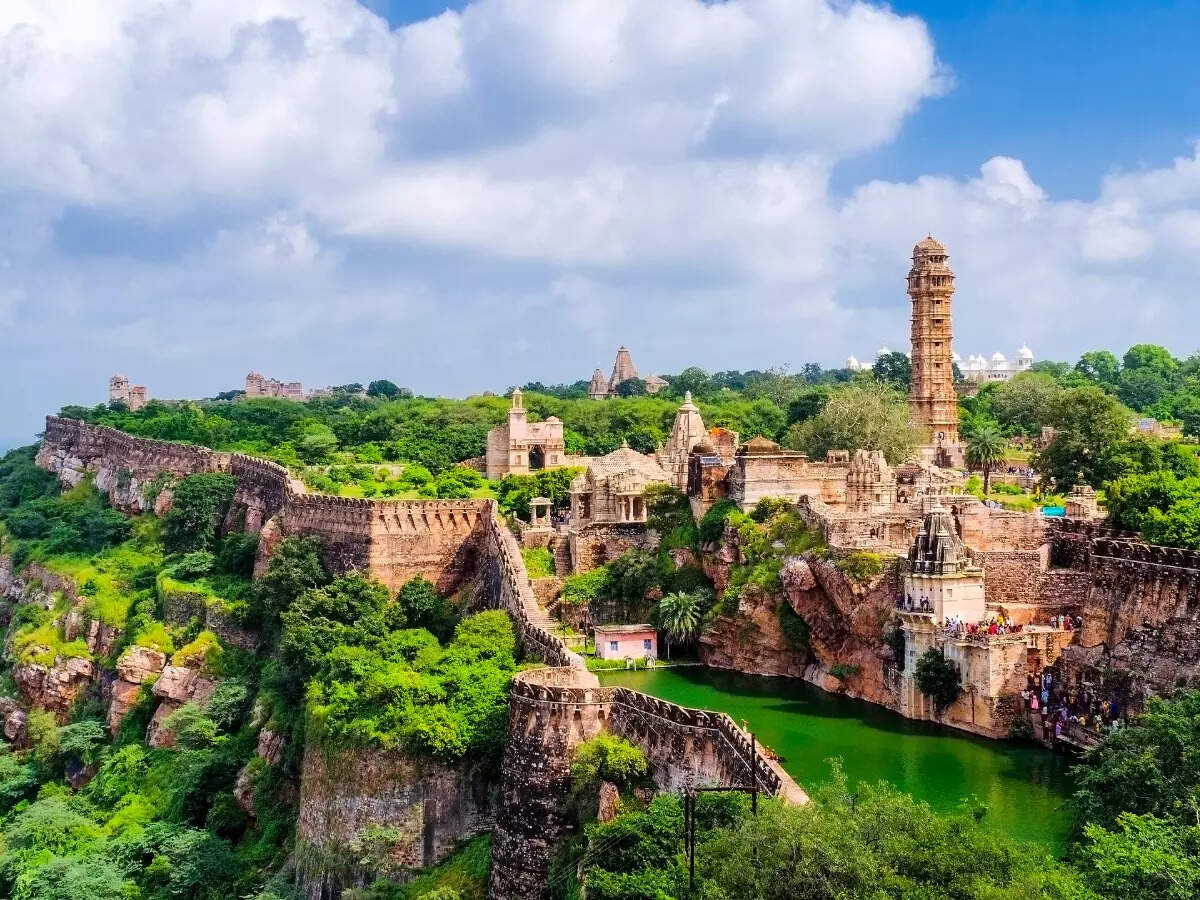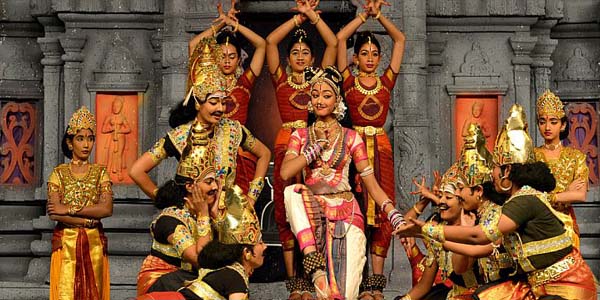Rajasthan, a state in India, is famous for its stunning hill forts. These forts showcase the rich history and architectural brilliance of the region.
The hill forts of Rajasthan are symbols of valor and grandeur. Built by Rajput rulers, they stand tall on rugged terrains, telling tales of battles and bravery. These majestic structures blend seamlessly with the natural landscape, offering breathtaking views and a glimpse into the past.
Each fort has its unique story and architectural style, reflecting the diverse culture of Rajasthan. Visiting these forts is like stepping into a different era, where every stone whispers secrets of the bygone days. Whether you’re a history buff or a travel enthusiast, the hill forts of Rajasthan promise an unforgettable journey through time.

Credit: timesofindia.indiatimes.com
Introduction To Hill Forts
Rajasthan, the land of kings, is renowned for its majestic hill forts that stand as proud sentinels of history. These forts, perched atop hills, offer panoramic views of the landscape and a glimpse into the rich cultural heritage of the region. The hill forts of Rajasthan are not just architectural marvels but also treasures of history that have witnessed the grandeur and glory of several dynasties. Let’s delve deeper into what makes these hill forts so fascinating.
Historical Significance
The hill forts of Rajasthan are steeped in history. Each fort has its own unique story, often filled with tales of valor and romance. They were built by Rajput kings to serve as strongholds against invading forces. For instance, the Chittorgarh Fort is famous for its three major sieges by powerful rulers. These forts were not just military bastions; they were also centers of administration, culture, and commerce. The Amber Fort, for example, was the seat of the Kachwaha Rajputs before they moved to Jaipur. When you visit these forts, you can almost hear the clashing swords and imagine the royal courts in session.
Architectural Grandeur
The architecture of these hill forts is a testament to the skill and artistry of ancient craftsmen. Each fort is unique in its design and construction. The Jaisalmer Fort, also known as the Golden Fort, is made of yellow sandstone that glows in the sunlight. The intricate carvings and latticework in the fort are simply mesmerizing. Another striking example is the Mehrangarh Fort in Jodhpur. It is known for its massive walls and beautifully decorated palaces. The fort’s architecture blends Rajput and Mughal styles, showcasing the best of both worlds. As you walk through these forts, you can’t help but marvel at the intricate details and the sheer scale of the structures.
Visiting these hill forts is like stepping back in time. You get to experience the grandeur of a bygone era and understand the strategic importance of these forts. Have you ever wondered how such massive structures were built without modern machinery? The hill forts of Rajasthan are a testament to human ingenuity and determination.
So, the next time you plan a trip to Rajasthan, make sure to include these hill forts in your itinerary. They are not just landmarks; they are lessons in history and architecture. Which fort will you explore first?

Credit: timesofindia.indiatimes.com
Famous Hill Forts
Rajasthan’s hill forts are stunning examples of architecture and history. These forts, like Amer Fort and Mehrangarh Fort, showcase the region’s rich heritage. Visitors can explore their grandeur and learn about the past.
The hill forts of Rajasthan are a testament to the region’s rich history and architectural brilliance. These majestic structures stand tall amidst the rugged landscapes, narrating tales of valor and grandeur. Each fort in Rajasthan has its unique charm and historical significance, attracting history buffs and travelers from around the world. Let’s delve into some of the famous hill forts that you must visit when exploring Rajasthan. Chittorgarh Fort is not just a fort; it’s a saga of heroism and sacrifice. Sprawling over 700 acres, this fort is an epitome of Rajputana pride. As you walk through its massive gates, you can almost hear the clashing swords and the galloping horses. One of the most striking features of Chittorgarh Fort is the Vijay Stambh (Victory Tower). This towering structure stands as a symbol of Maharana Kumbha’s triumph over Mahmud Khilji. Climbing the 157 steps to the top offers a panoramic view of the fort and the surrounding landscape. Have you ever thought about the lives of the warriors and their families who lived here? Their stories echo through the ruins of Rana Kumbha Palace and Padmini’s Palace. The intricate carvings and the architectural design of these palaces are a marvel to behold. Amber Fort, perched on the Aravalli Hills, is a blend of Hindu and Mughal architecture. The fort’s grandeur is evident from the moment you approach it. The Sheesh Mahal (Mirror Palace) inside the fort is a sight to behold, with its walls and ceilings adorned with thousands of tiny mirrors. Imagine walking through the courtyards and halls, once bustling with the activities of the royal family. The Diwan-e-Aam (Hall of Public Audience) and Diwan-e-Khas (Hall of Private Audience) are perfect examples of the fort’s splendor. One unique experience you can’t miss is the light and sound show held every evening. It beautifully narrates the fort’s history, bringing the walls and corridors to life. Have you ever experienced history come alive like this? It’s magical and educational at the same time. These hill forts are not just about stone and mortar. They are about the stories, the culture, and the spirit of the people who built them. Visiting Chittorgarh Fort and Amber Fort is like stepping back in time, offering a glimpse into the glorious past of Rajasthan. So, when are you planning your visit to these magnificent forts?Chittorgarh Fort
Chittorgarh Fort, one of the Hill Forts of Rajasthan, boasts impressive architecture and a rich history. It stands as a symbol of bravery and sacrifice. Visitors can explore its grand palaces and temples.
Chittorgarh Fort is not just a structure; it’s a living narrative of Rajasthan’s rich history. Nestled on a hill, this majestic fort stands as a testament to the valor, romance, and tragedy that shaped the fate of the region. Each corner of Chittorgarh echoes stories from the past, inviting you to delve into an era of legendary battles and heroic tales.Legendary Tales
Chittorgarh Fort is a canvas painted with many legendary tales. One of the most famous is the story of Rani Padmini. She was renowned for her beauty and courage. When Alauddin Khilji laid siege to the fort, captivated by tales of her beauty, she chose to commit Jauhar (self-immolation) with the other women of the fort, rather than fall into the hands of the invader. Imagine standing where these events unfolded. It gives you chills, doesn’t it? These stories are more than just tales; they are accounts of incredible bravery. The fort’s walls still seem to whisper these ancient stories, urging us to remember and honor the past.Architectural Features
Chittorgarh Fort is a marvel of architecture. Spread over 700 acres, it is a blend of Rajputana and Mughal styles. The fort is home to several palaces, temples, and towers. Rana Kumbha Palace is a highlight. You can explore the intricate carvings and spacious courtyards. Standing there, you can almost hear the footsteps of soldiers and the hustle of the royal court. Vijay Stambh (Tower of Victory) is another striking feature. This 9-story tower, adorned with detailed sculptures, celebrates Rana Kumbha’s victory over the Sultan of Malwa. Climbing up the narrow staircase is an experience in itself, offering you panoramic views of the fort and the surrounding landscape. Gaumukh Reservoir, a water tank shaped like a cow’s mouth, showcases the advanced water management techniques of the time. This reservoir was crucial in sustaining the fort during sieges. Walking through the fort, you can’t help but admire the blend of functionality and artistry. Each structure serves a purpose, yet it is designed with such elegance. It’s an architectural wonder that stands the test of time. Doesn’t it make you wonder how they achieved such precision without modern technology? Chittorgarh Fort is not just a destination. It’s an experience. It’s a place where history comes alive, and every visit leaves you with a deeper appreciation for the past. So, when you plan your next trip, make sure to put Chittorgarh Fort on your list. You won’t regret it.
Credit: www.indianluxurytrains.com
Amber Fort
Amber Fort, also known as Amer Fort, is a majestic fort located in Jaipur, Rajasthan. Built in the late 16th century by Raja Man Singh, the fort stands as a proud symbol of the Rajputana era. With its grand architecture and intricate designs, Amber Fort attracts tourists from all over the world.
Cultural Importance
Amber Fort holds immense cultural significance in Rajasthan’s history. It served as the main residence of the Rajput Maharajas. The fort reflects the rich heritage and traditions of the Rajput clan. Festivals and events held here showcase traditional music and dance. These events keep the culture alive and vibrant.
Design Highlights
The fort’s design is a blend of Hindu and Mughal architecture. It features large ramparts, series of gates, and cobbled paths. Sheesh Mahal, or the Mirror Palace, is a major attraction. The walls and ceilings of Sheesh Mahal are covered with mirrors. Even a small light can illuminate the entire hall.
Another notable feature is the Diwan-e-Aam, the Hall of Public Audience. Here, the king addressed the common people. The fort also has beautifully painted walls and ceilings. The artwork showcases scenes from Rajput folklore. The Sukh Niwas is another highlight with its cooling system. This design used water channels to keep the rooms cool during summer.
Ranthambore Fort
Ranthambore Fort stands proudly among the Hill Forts of Rajasthan. This majestic fort offers stunning views of the surrounding forest. Built in the 10th century, it holds a rich history and cultural significance.
The Ranthambore Fort, nestled in the heart of Rajasthan, is a splendid example of ancient Indian architecture and history. This fort, which is part of the UNESCO World Heritage Sites, stands proudly within the Ranthambore National Park. A visit to this fort offers not just a glimpse into India’s rich past but also a chance to witness the stunning wildlife that roams freely around it.Wildlife And History
Have you ever imagined exploring a historic fort while being surrounded by exotic wildlife? At Ranthambore Fort, this dream can come true. The fort is located within a tiger reserve, home to the majestic Bengal tigers. As you walk through the fort’s ancient corridors, you might hear the distant roar of a tiger or spot a deer grazing nearby. This unique blend of history and nature is truly captivating. The fort itself is steeped in history. Built in the 10th century, it has witnessed numerous battles and has been ruled by several dynasties. Its walls tell stories of valor and resilience. Exploring the fort, you will find temples, palaces, and monuments that provide a peek into the past. Imagine standing where kings once stood, planning their next move in the game of thrones.Strategic Location
One of the most fascinating aspects of Ranthambore Fort is its strategic location. Perched on a hilltop, the fort offers panoramic views of the surrounding landscape. This elevated position was crucial for defense, allowing occupants to spot approaching enemies from afar. You can’t help but feel a sense of awe as you look out from the fort’s ramparts. The sweeping views of the forest below and the serene lakes create a picturesque scene. This vantage point not only provided a tactical advantage but also ensured that the fort remained a formidable stronghold for centuries. Ranthambore Fort’s location also means it’s accessible from various parts of Rajasthan, making it a convenient stop on your travel itinerary. Whether you’re a history buff, a wildlife enthusiast, or simply someone who loves breathtaking views, this fort has something to offer. So, what are you waiting for? Embark on an adventure to Ranthambore Fort and immerse yourself in its rich history and natural beauty. Have you ever visited a place that combines both history and nature so seamlessly? Share your experiences and thoughts in the comments below!Kumbhalgarh Fort
The Kumbhalgarh Fort stands tall in the Aravalli Hills of Rajasthan. Known for its grandeur and history, this fort is a must-visit. Built by Rana Kumbha in the 15th century, Kumbhalgarh Fort is a UNESCO World Heritage Site. It offers stunning views and a glimpse into Rajasthan’s rich past.
Massive Walls
The walls of Kumbhalgarh Fort are truly massive. They stretch over 36 kilometers and are among the longest in the world. These walls are thick and formidable, protecting the fort from invaders. Walking along these walls feels like stepping back in time.
The walls are also an architectural marvel. Built with large stone blocks, they have stood the test of time. These walls are a testament to the skill and effort of the builders.
Historical Battles
Kumbhalgarh Fort has witnessed many historical battles. It was a stronghold for the Rajputs, who defended it fiercely. The fort’s strategic location made it a key point of defense.
One of the most famous battles was against the Mughal Emperor Akbar. Despite repeated attacks, the fort stood strong. The Rajputs’ bravery and the fort’s defenses ensured its safety.
These battles are a significant part of the fort’s history. They highlight the resilience and courage of the people who lived there. Exploring Kumbhalgarh Fort offers a deeper understanding of Rajasthan’s heroic past.
Tourism And Conservation
Rajasthan, the land of kings, boasts a majestic array of hill forts that are a must-visit for any history enthusiast. These fortresses, perched high on the rugged terrain, offer not only a glimpse into the opulent past but also present a unique blend of tourism and conservation efforts. If you’re planning your next trip, these forts promise a journey through time, while ensuring their preservation for future generations.
Visitor Attractions
When you visit the hill forts of Rajasthan, you will be greeted with stunning architecture and rich cultural heritage. Each fort has its own unique story and charm. Take Amer Fort, for instance. Its intricate mirror work and panoramic views of Maota Lake are simply breathtaking. You can also enjoy an elephant ride to the fort, adding an extra layer of adventure to your visit.
Then there’s the Chittorgarh Fort, known for its massive structure and significant historical events. Walking through its gates, you can almost hear the echoes of battles fought and tales of valor. The sound and light show held every evening brings these stories to life in a vibrant display.
Don’t miss the Kumbhalgarh Fort, where the second-longest wall in the world wraps around the fort’s boundaries. It offers a challenging yet rewarding trek with mesmerizing views from the top. The fort is also part of the Great Indian Bustard Sanctuary, allowing you to spot some rare bird species.
Preservation Efforts
Conserving these forts is crucial to maintaining their historical and cultural significance. Efforts have been made by both government and non-government organizations to protect and restore these sites.
One significant initiative is the UNESCO World Heritage status given to six hill forts of Rajasthan. This recognition not only boosts tourism but also ensures international funds and expertise for preservation. For example, the restoration of the intricate frescoes at Amer Fort has been a priority, ensuring that future visitors can appreciate their original beauty.
Local communities also play a vital role in conservation. By involving them in preservation efforts, there’s a sense of ownership and pride in protecting their heritage. Sustainable tourism practices, such as limiting visitor numbers and promoting eco-friendly activities, are implemented to minimize the impact on these fragile structures.
However, the question remains: How can we, as visitors, contribute to these efforts? Simple actions like following designated paths, not littering, and respecting the site’s rules can go a long way. By being mindful tourists, we can help ensure that these magnificent forts stand tall for centuries to come.
So, next time you find yourself in Rajasthan, immerse yourself in the splendor of its hill forts. Enjoy the blend of history and natural beauty, and take pride in playing a part in their preservation.
Frequently Asked Questions
How Many Hill Forts Are There In Rajasthan?
Rajasthan has six majestic hill forts. These forts are UNESCO World Heritage Sites. They showcase the rich history and architectural brilliance of the region.
What Is The History Of Hill Forts?
Hill forts originated in the Late Bronze Age and Iron Age. Ancient communities built them for defense and habitation. These forts were common in Europe, especially in Britain and Ireland. Hill forts often featured earthworks, wooden or stone walls, and strategic locations on elevated ground.
What Is The Ranila Hill Fort Rajasthan?
Ranila Hill Fort in Rajasthan is an ancient fort known for its historical significance and stunning architecture. It attracts many tourists.
Which Fort Is Known As Golden Fort Of Rajasthan?
The Golden Fort of Rajasthan is Jaisalmer Fort. Built in 1156 AD by Rawal Jaisal, it’s famous for its golden sandstone walls.
Conclusion
Hill forts of Rajasthan offer a unique glimpse into history. These ancient structures tell stories of bravery and culture. Their architecture is truly awe-inspiring. Visitors can experience the rich heritage firsthand. Exploring these forts provides a sense of adventure. Each fort has its own charm and significance.
Rajasthan’s hill forts are treasures worth discovering. Plan your visit to witness their grandeur. Enjoy the journey through Rajasthan’s fascinating past.
{ “@context”: “https://schema.org”, “@type”: “FAQPage”, “mainEntity”: [ { “@type”: “Question”, “name”: “How many hill forts are there in Rajasthan?”, “acceptedAnswer”: { “@type”: “Answer”, “text”: “Rajasthan has six majestic hill forts. These forts are UNESCO World Heritage Sites. They showcase the rich history and architectural brilliance of the region.” } } , { “@type”: “Question”, “name”: “What is the history of hill forts?”, “acceptedAnswer”: { “@type”: “Answer”, “text”: “Hill forts originated in the Late Bronze Age and Iron Age. Ancient communities built them for defense and habitation. These forts were common in Europe, especially in Britain and Ireland. Hill forts often featured earthworks, wooden or stone walls, and strategic locations on elevated ground.” } } , { “@type”: “Question”, “name”: “What is the Ranila hill fort Rajasthan?”, “acceptedAnswer”: { “@type”: “Answer”, “text”: “Ranila Hill Fort in Rajasthan is an ancient fort known for its historical significance and stunning architecture. It attracts many tourists.” } } , { “@type”: “Question”, “name”: “Which fort is known as Golden fort of Rajasthan?”, “acceptedAnswer”: { “@type”: “Answer”, “text”: “The Golden Fort of Rajasthan is Jaisalmer Fort. Built in 1156 AD by Rawal Jaisal, it’s famous for its golden sandstone walls.” } } ] }


